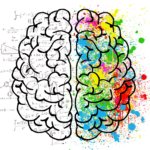
If you’ve been around the world of learning disabilities long enough, you’ve heard the phrase “Orton-Gillingham.” You may have even learned that the right kind of program for teaching students with dyslexia needs to be “Orton-Gillingham based.” Who were these people?
Dr. Samuel Orton (1879-1948) was an American physician who began his career working with adults with brain damage. His work eventually led him to children who seemed to be fine except they had a problem with language. Even though the children he studied had normal IQ’s, they just couldn’t learn to read, write, and spell. Dr. Orton connected his work with brain damage and determined that the issue stemmed from the brain’s left hemisphere. Dr. Orton’s key contribution was to recommend teaching that was multi-sensory, incorporating both hemispheres of the brain.
He paired with psychologist Anna Gillingham, who developed a systematic way of teaching the 70 phonograms (single letters and pairs of letters) of our language.
In the years since Dr. Orton’s death, most of his findings have been proven correct. The Orton-Gillingham approach, a multi-sensory technique of teaching language, continues to be the best method of helping children with dyslexia learn to read and spell.
